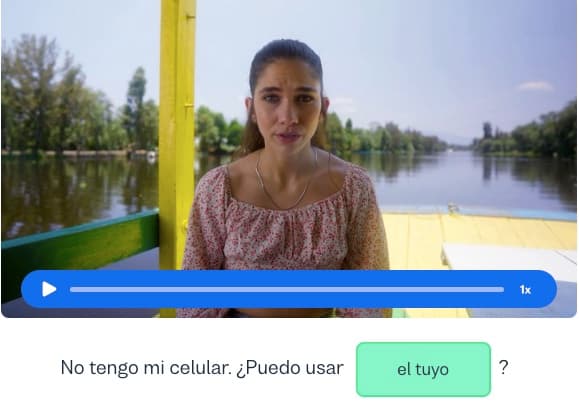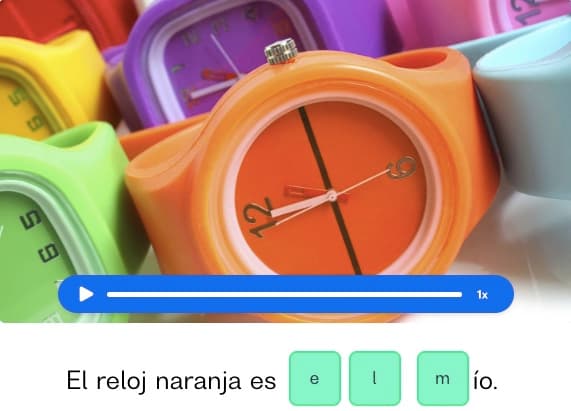I want to learn...
If you’ve ever watched the children's television series,Lazy Town, you might remember Stingy’s song “Everything is Mine.” It’s a masterclass in possessive pronouns. As you can imagine, possessive pronouns in Spanish indicate possession of something.
In this comprehensive guide, we will explore the rules, exceptions, and nuances of possessive pronouns in Spanish, providing you with a solid foundation to enhance your language skills.
What are Spanish possessive pronouns?
Spanish possessive pronouns replace the noun to indicate ownership or possession. They agree in gender and number with the nouns they represent.
Spanish possessive pronouns vs. adjectives
The main difference between possessive adjectives and possessive pronouns lies in how they are used in a sentence: Possessive adjectives modify a noun, indicating ownership or possession. They agree in gender and number with the noun they describe. Possessive pronouns, on the other hand, replace the noun to show ownership or possession. They also agree in gender and number with the noun they represent.
Have a look at the following examples:
Possessive adjective: Esta es mi casa. (This is my house.)
Possessive pronoun: Esta casa es mía. (This house is mine.)
Examples of Spanish possessive pronouns
| Subject | Possessive singular (masc./fem.) | Possessive plural (masc./fem.) |
|---|---|---|
| yo | (el) mío, (la) mía | (los) míos, (las) mías |
| tú | (el) tuyo, (la) tuya | (los) tuyos, (las) tuyas |
| él, ella, usted | (el) suyo, (la) suya | (los) suyos, (las) suyas |
| nosotros/nosotras | (el) nuestro, (la) nuestra, | (los) nuestros, (las) nuestras |
| vosotros/vosotras | (el) vuestro, (la) vuestra | (los) vuestros, (las) vuestras |
| ellos, ellas, ustedes | (el) suyo, (la) suya | (los) suyos, (las) suyas |
Spanish possessive pronouns in action
Here you can find some examples of the Spanish possessive pronouns used in a sentence:
Examples:
Este libro es mío. (This book is mine.)
Disculpe, ¿es este abrigo suyo? (Excuse me, is this coat yours?) (formal)
Los perros son nuestros. (The dogs are ours.)
No olvidéis traer vuestros documentos. (Don't forget to bring your documents.) (informal, addressing a group)
Esos cuadernos son suyos. (Those notebooks are theirs.)
The Spanish structure “Lo + possessive”
It is interesting to know that it is possible to use the neutral form "lo" with possessive pronouns. In fact, it is quite common to say or hear sentences like these:
Lo mío es el fútbol. (Football is my thing.)
Lo tuyo es el tenis. (Tennis is your thing.)
Cocinar no es lo mío. (Cooking is not my thing.)
With the neutral form "lo" + possessive pronoun, we generally refer to an activity that we really like or that we do very well (or the opposite, using "no es + lo + possessive").
Spanish possessive pronouns: Recap
Spanish possessive pronouns are powerful linguistic tools that replace nouns to express ownership and possession. They agree in gender and number with the nouns they replace.
By using possessive pronouns, speakers can convey strong ties to their possessions, emotions and relationships. From informal to formal settings, these pronouns allow for precise expression and avoid ambiguity.
Embracing the use of Spanish possessive pronouns enables learners to engage with the language more fluently and connect with Spanish speakers on a deeper level.
Newlanguages


